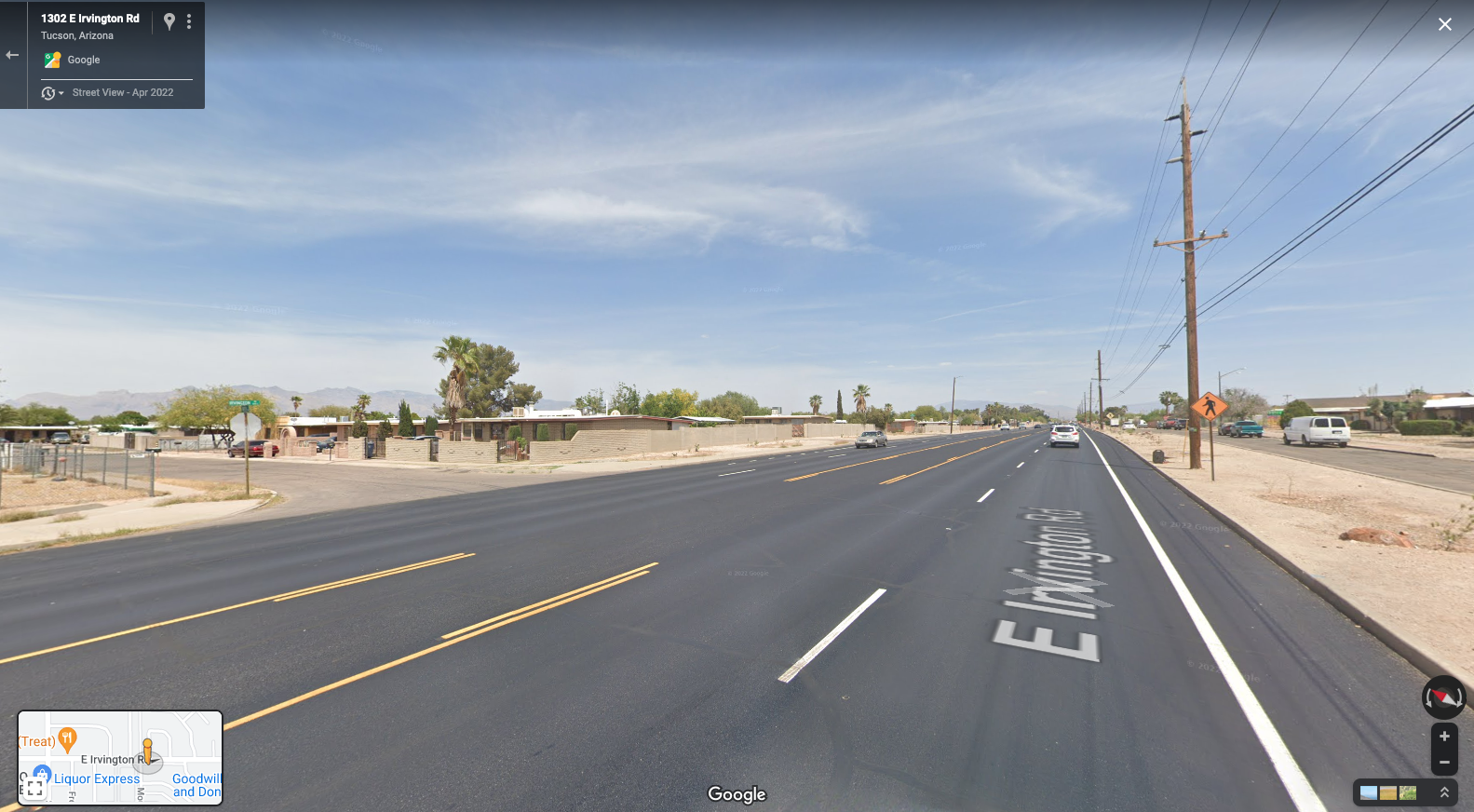A Few Thoughts On Traffic Fatalities, Media Reporting, And Victim Blaming
On December 28, 2022, Tucson recorded the 99th traffic fatality of the year which was announced in a media release that came out of Tucson Police Department (TPD). That number represents an 18% increase from the year before and is both alarming and tragic. Our annual pedestrian fatalities jumped 48% last year and a staggering 75% in the five-year period from 2018 to 2022.
National traffic safety trends are also deeply discouraging. According to the National Highway Traffic Safety Administration, traffic fatalities in the U.S. hit a 16-year high in 2021 with pedestrian fatalities seeing the highest level in 40 years. While inquiries focused on the increase such as this one are useful to broaden our understanding of the different factors at play, some of the reporting we’ve been seeing locally prompted us to share a reminder that our infrastructure, the way our streets are built to prioritize speed over safety, has been putting people in danger while they’re traveling on our streets, and that was the case prior to last year’s increase in fatal crashes. Take this AZ Daily Star article from 2013 which reported a “record number” of people killed while walking —a number we have far surpassed in subsequent years. The truth is the number of our traffic fatalities, including our pedestrian fatalities, were alarming and unacceptable in 2022, in 2013, and any year in between. The only acceptable number is ZERO.
According to the crash analysis done for Tucson’s Pedestrian Safety and Action Plan, 80% of pedestrian deaths and serious injuries occur on streets with speed limits of 35+ mph and 90% of pedestrian deaths and severe injuries occur on JUST 11% of Tucson streets. We know that speed is a major contributing factor on whether a crash that involves a person walking will turn deadly. Yet, we hardly ever see any reporting that acknowledges how our arterials that are “dangerous by design” are a major contributing factor when it comes to these fatalities. (Check out this excellent blog post here explaining what that means.)
Instead, what we often notice in TPD media releases and in news stories published or broadcasted on various media outlets, are remarks on how the person killed while walking was “wearing dark clothing” or was “not in a crosswalk.” And lately we’ve been seeing more and more of this: “Midblock crossing is the major contributing factor.”
On December 4th, 2022, a 49-year-old woman whose identity was not released was killed while crossing the street at E. Irvington Rd and S. Calle Pomona. The TPD media release that was issued about the crash contained the following statements:
“The pedestrian was not in a marked or unmarked crosswalk, was wearing dark clothing, and there were no street lights in the immediate area. Additionally, the roadway surface was wet and the fog limited visibility in the area.”
“Mid-block crossing by the pedestrian is the major contributing factor of the collision.”
“The pedestrian had alcohol in her possession; however, it is unknown if she was impaired by alcohol or drugs.”
Let’s take a look at where this fatal crash took place. Irvington Rd at this location is a 5-lane road with a posted speed limit of 35 mph. The nearest marked crosswalks are on Park Avenue roughly ¼-mile away to the west and on Campbell Avenue about ½ mile to the east. There are five Sun Tran bus stops along this stretch, not counting the two that are located at the aforementioned intersections. People often need to cross major streets like this to get to a bus stop depending on their direction of travel. Looking at the “pedestrian crossing” signs placed all along the corridor, we understand that foot traffic is anticipated in the area. Unfortunately, those signs offer no protection whatsoever to people who need to get across this multi-lane, high speed roadway.
This is a typical example of a street that prioritizes speed over safety and even though the posted speed limit is 35 mph, we wouldn’t be surprised if the observed driving speeds were higher than that given the design of this roadway that doesn’t send any visual cues to drivers to slow down.
In light of the built environment conditions, a revised media release could perhaps report that “the auto-centric design of the street including lack of safe and frequent designated crossings for people walking and lack of streetlights was the major contributing factor.”
With the start of the new year, the fatality count began at 0 in the TPD media releases. But, in reality, there is no “reset” button for the people who lost their lives or their loved ones in these tragic traffic crashes. There is an urgent need to start retrofitting our streets that are “dangerous by design” to prioritize the safety of all people no matter how they travel. This is the only way we can set that counter to zero, permanently.
Note: We’ve been documenting Tucson’s traffic fatalities on this map since 2017.





